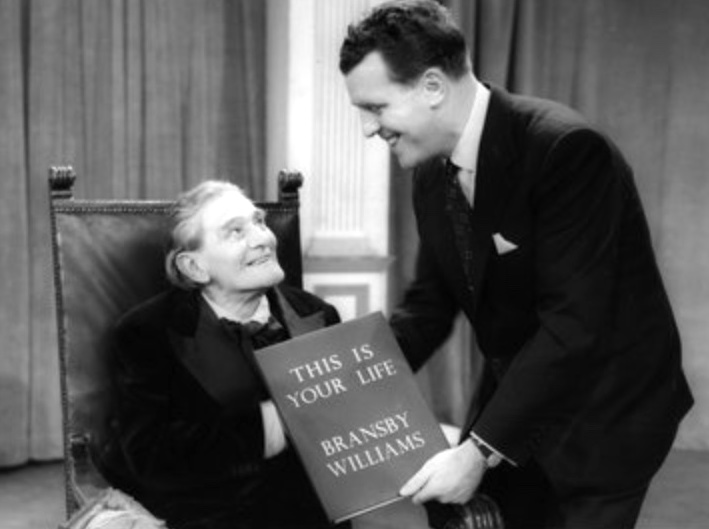OTD in early British television: 16 August 1937

John Wyver writes: After a three week break. a full schedule began again from AP on the afternoon of Monday 16 August 1937. Two afternoons of Davis Cup tennis and some test broadcasts had been the only offering for lookers-in during the ‘holiday’. Andrew Martin provides the background to this in his 2017 blog post:
The service was still in its infancy, and engineers at Alexandra Palace needed to carry out maintenance on equipment which they were still working out how to use… It was decided to take the single studio (Studio A) then in use out of service for a few weeks. The break also saw the end of the Radio Times Television Supplement, which was glossy, lavishly illustrated and expensive to produce; indeed there were no television listings at all in the magazine during the three weeks.
At 3pm on the Monday afternoon announcer Jasmine Bligh, pictured below in a BBC photograph taken off-screen in August 1937, welcomed back viewers to a schedule that began with an edition of Gaumont-British News.

Following on from the newsreel, there was a mixed programme of Indian dancing by Mayura Vincent, Vaughan Williams songs from John Thompson, and a short comic drama adapted by George W Y Porter from Tolstoy’s story ‘A Capital Punishment’.
The main feature of the afternoon, after the short film Bugle from Blue Grass, was the 25-minute (throuigh to 4.10pm) Scenes from Romeo and Juliet, mounted by Royston Morley with Jean Forbes-Robertson and an unbilled Michael Redgrave as the doomed lovers. John Wyse appeared as Friar Laurence and Mario Francelli, Balthasar.
Programmes began again at 9pm with a weather chart and then two monologues from ‘the Irving of the music halls’ Bransby Williams (see above, in 1958). He was celebrated for giving life to a range of Dickens characters and for his impersonations of famous actors, and while a mere 67 years old at the time of this appearance, he continued to tour to the age of 80.
Following him was a brief talk about commercial art by Edward Swann, known amongst much else for his landscapes used in advertisements for the GWR rail company. British Movietone News was next, and then an edition of Cabaret Cartoons, in which Harry Rutherford sketched vaudeville acts including ‘upside-down dancers’ the Topsy Turvey Two, as they performed in the studio. Closedown came at 10.05pm
Header image: Bransby Williams as the subject of This Is Your Life, with of course Eamonn Andrews as compere, 8 December 1958.
[OTD post no. 242; part of a long-running series leading up to the publication on 8 January 2026 of my book Magic Rays of Light: The Early Years of Television in Britain, which can now be pre-ordered from Bloomsbury here.]
Leave a Reply